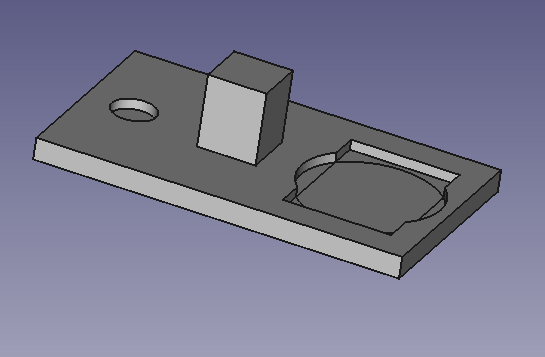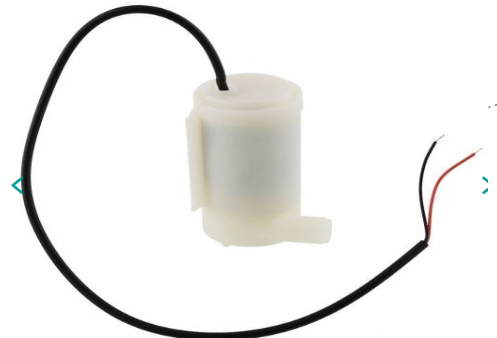Team
- S03
- S05
Motivation
Various types of drinks are consumed during many social events. It is often necessary to pour these drinks directly from the bottle, so losses can occur when spilled, or if it is necessary to pour a large amount of drinks, it takes a lot of time. We mainly wanted to solve the spillage problem, which multiplies with the consumption of certain liquids. The result of our project should be a device that, regardless of the type of liquid, can tap the exact amount of the given liquid without losses and always in the same amount by pressing a button.
Solution
Draft
After deciding on a project, we had to put our design on paper. We already had a plan how it should look, only dimensions needed to be adjusted as we went.
The following image shows our idea from 2 sides:

There should be 2 places on the model, where either shot glass or bottle can be put. For bottles, we wanted to make sure they would not fall out easily, which is why we made a slight reduction for bottle to be placed in. Since bottles come in different shapes and dimensions, we also had to find dimensions of bottles, which we would support. For this, we measured measured dimensions of many different liquor brands available for purchase in Slovakia and created following table:

The table consisted of the volume each bottle had and its dimensions. We made a macro to differentiate the biggest value in each column, which showed us the right size for our bottle holder.
The next picture shows how it should be connected:

Design
For creating the model, we used FreeCad. Even though we have not used this software previously, to our suprise it was fairly easy to get a good grasp of how it works. Since our dispenser should be easily transportable, we chose to do make a 3 part design, which can be easily assembled without any tools necessary.

Assembled model should look like this:

Hardware
For our dispenser to work properly, it needs following hardware:
- Raspberry PI/ESP board
- Pump + tubes
We had previous experiences using small pump to pump liquid from one container to other, so we choose the one we know

The pump had following parameters:
- DC 2.5 - 6V
- max lift 40 - 110cm
- flow rate: 80 - 120 L/h
Unfortunately, after doing a test run, we have found out that this type of pump is insufficient for our purposes and we need a more powerful type (this type was not strong enough to our surprise). The pump would work if it was directly submerged in the liquid, which is not good enough, since it would drastically reduce types of bottles we could support (bottles usually have narrow neck).
Another problem we came across was with using a board with raspberry PI. We wanted to implement pump control using our input, but the switching transistor has failed while we were doing dry tests, which meant we lost total control of the pump

We used following pins and code on our PI (and ground) for testing purposes:


Printed model


Conclusion
The result of our project provides a finished 3D model that can be printed and used for final production. In addition to the model, we also designed the connection of individual electronic components and also selected some mechanical components. We found that we undersized the pump and therefore for a functional prototype it is necessary to choose a stronger pump with a stronger source. However, the switching transistor can be controlled via the Raspberry PI as suggested. We plan to continue working to create the first working prototype that can meet the requirements we set at the beginning of the project.
 2023/2024
2023/2024